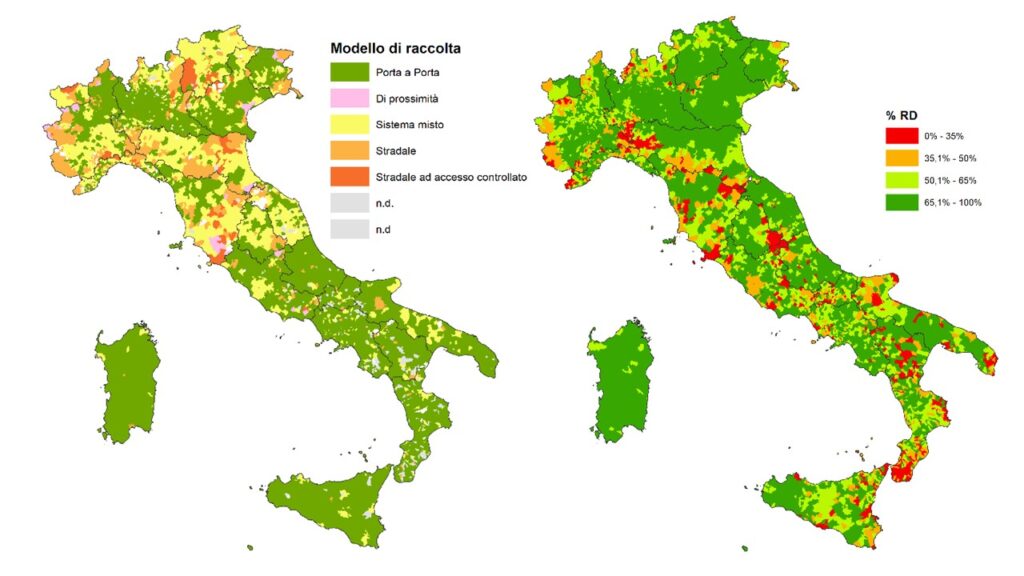In 2023, Sartori Ambiente commissioned a study from ARS Ambiente to learn about the separate waste collection trends in Italy. With the aim of having a real and concrete picture of the national situation, for the analysis ARS Ambiente collected data from different sources:
- The differENTI platform, by CONAI (National Packaging Consortium)
- A survey carried out by Junker APP
- ISPRA (Italian Institute for Environmental Protection and Research)
- ISTAT (Italian National Institute of Statistics)
They created a unique database through which it is possible to analyze the collection models of 7,516 Italian municipalities, counting a population of about 58 million inhabitants, representing 98% of the national population.
The study highlighted the collection models used at the national level, and in particular:
- home collection
- proximity road collection
- mixed systems
- collection with road containers
- road collection with controlled access containers
Among these, the home collection system is used in 4,761 Municipalities, serving a population of 35.7 million inhabitants, representing approximately 63% of the Municipalities and 61% of the Italian population.

Where is the home collection system carried out?
The analysis revealed that this model can be applied in every context.
| Context | Number of Municipalities with home collection system | Inhabitants (Mil) | Average %HC |
| Rural or lower populated areas |
899 |
1.41 |
65.3% |
| Densely populated cities > 100,000 inhabitants |
9 |
1.21 |
73.3% |
| Maritime, tourist municipalities, HC > 75% |
113 |
1.36 |
80.1% |
| Highly tourist municipalities (S5 ISTAT tourist index) and HC > 65% |
379 |
4.67 |
75.3% |
Why is home collection system the most common?
Because it leads to the best performance in terms of monitoring and collecting those waste fractions that can be reused and recycled.
What are the next project developments?
As the study progresses, the analysis will go through the economic elements (service costs) and the elements related to the quality of the service in monitoring the recycling fractions for home collection systems, especially with respect to controlled access road collection models that will be used in many territories thanks to the Recovery and Resilience Plan.
